November 2, 2015, marked the 15th anniversary since the International Space Station (ISS) became operational. On this day, 15 years ago, a Soyuz spacecraft brought the first long-term expedition to the ISS.

The International Space Station is habitable artificial satellite which serves as a multipurpose space research laboratory. Now, it is the largest artificial body in orbit and can often be seen with the naked eye from Earth.
Above: A handout picture made available by NASA on November 3, 2015 shows a view of the International Space Station (ISS) in space.
Above: A handout picture made available by NASA on November 3, 2015 shows a view of the International Space Station (ISS) in space.
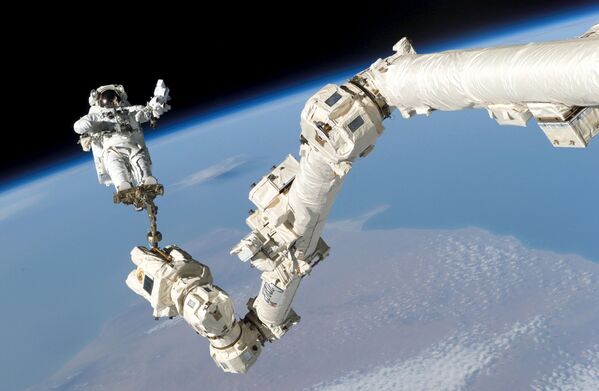
The ISS serves as a microgravity and space environment laboratory suitable for a wide range of experiments. The variety of research fields include astrobiology, astronomy, human research including space medicine and life sciences, physical sciences, materials science, space weather, and meteorology.
Above: Astronaut Stephen K. Robinson, STS-114 mission specialist, anchored to a foot restraint on the International Space Station's Canadarm2, participates in the mission's third extravehicular activity session.
Above: Astronaut Stephen K. Robinson, STS-114 mission specialist, anchored to a foot restraint on the International Space Station's Canadarm2, participates in the mission's third extravehicular activity session.
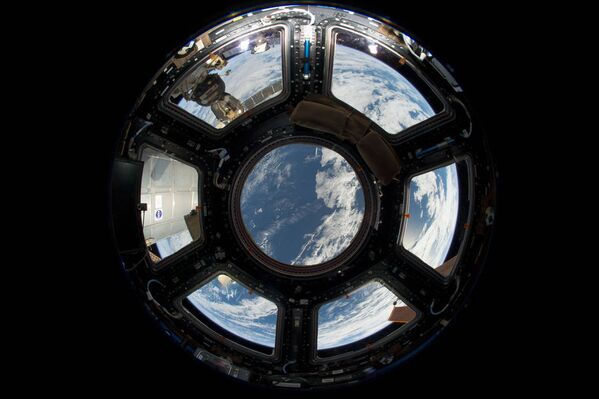
The ISS project involves 14 countries: the US, Russia, Japan, Canada, Italy, Belgium, Netherlands, Denmark, Norway, France, Spain, Germany, Sweden and Switzerland. Initially, Britain and Brazil took part, but later quit.
Above: A view of Earth as seen from the Cupola on the Earth-facing side of the International Space Station.
Above: A view of Earth as seen from the Cupola on the Earth-facing side of the International Space Station.
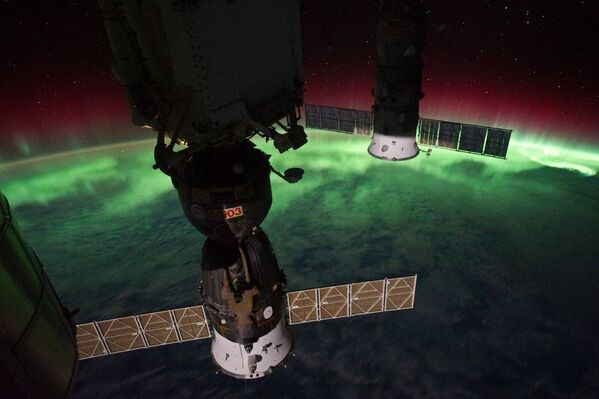
The ISS project was based on a successful Russian-made manned orbital station and the US Shuttle manned launch vehicle program.
Above: Aurora Australis Over New Zealand, Tasman Sea.
Above: Aurora Australis Over New Zealand, Tasman Sea.

The building of the ISS in the low orbit began on November 20, 1998. The first module of the ISS, Zarya, was launched on 20 November 1998 on an autonomous Russian Proton rocket
Above: Lake Baikal, Siberia. Immensely old and deep, it holds one-fifth of all the Earth's fresh water.
Above: Lake Baikal, Siberia. Immensely old and deep, it holds one-fifth of all the Earth's fresh water.
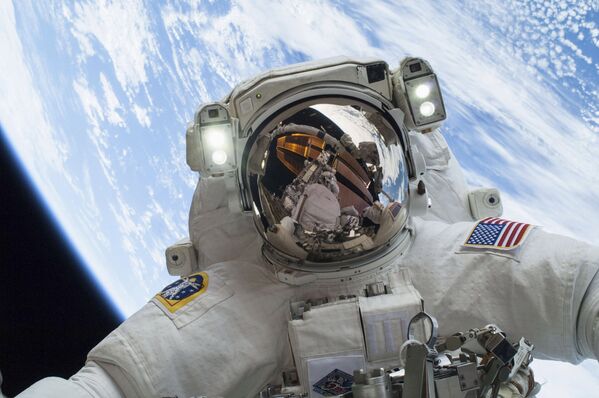
The station has been continuously occupied for 15 years and 0 days since the arrival of Expedition 1 on November 2, 2000. This is the longest continuous human presence in space, having surpassed the previous record of 9 years and 357 days held by Mir.
Above: Astronaut Mike Hopkins, Expedition 38 Flight Engineer, is shown in this handout photo provided by NASA as he participates in the second of two spacewalks which took place on December 24, 2013.
Above: Astronaut Mike Hopkins, Expedition 38 Flight Engineer, is shown in this handout photo provided by NASA as he participates in the second of two spacewalks which took place on December 24, 2013.
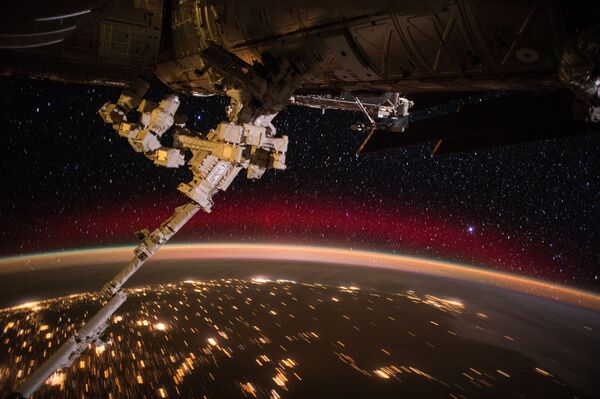
The ISS maintains an orbit with an altitude of between 330 and 445 kilometers. From time to time, the orbit needs to be corrected using the engines of the Zvezda module or visiting spacecraft. The ISS completes 15.54 orbits per day (one orbit takes nearly 90 minutes).
Above: International Space Station crew members captured this view of the station's remote controlled Canadarm protruding from the orbiting laboratory, with Earth's colorful aurora, sparkling city lights and a rising sun over a background of stars.
Above: International Space Station crew members captured this view of the station's remote controlled Canadarm protruding from the orbiting laboratory, with Earth's colorful aurora, sparkling city lights and a rising sun over a background of stars.
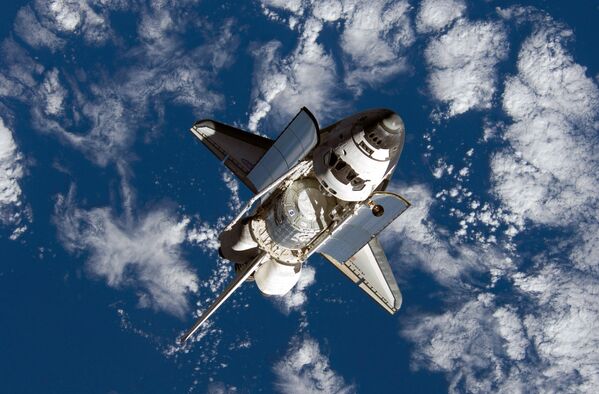
The station is serviced by a variety of visiting spacecraft: Soyuz, Progress, the Automated Transfer Vehicle, the H-II Transfer Vehicle, Space X’s Dragon, and Cygnus.
Above: This handout provided by NASA, backdropped by a blue and white Earth, shows US Space Shuttle Discovery approaching the International Space Station during STS-120 rendezvous and docking operations.
Above: This handout provided by NASA, backdropped by a blue and white Earth, shows US Space Shuttle Discovery approaching the International Space Station during STS-120 rendezvous and docking operations.

The first long-term expedition to the ISS started on October 31, 2000, when a Soyuz TM-31 spacecraft carrying Russian cosmonauts Yury Gidzenko and Sergei Krikalev and NASA astronaut William Sheperd was launched to the orbit. On November 2, the spacecraft docked with the ISS. Since then, the station has been permanently habitable.
Above: Live broadcast on the screen in the Mission Control Center: Russian cosmonauts Oleg Kotov and Sergey Ryazansky walk into open space with the Olympic torch.
Above: Live broadcast on the screen in the Mission Control Center: Russian cosmonauts Oleg Kotov and Sergey Ryazansky walk into open space with the Olympic torch.
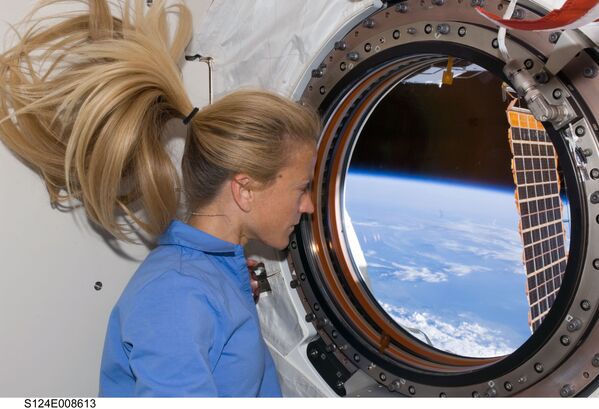
The ISS has been visited by astronauts, cosmonauts and space tourists from 17 different nations.
Above: Astronaut Karen Nyberg, STS-124 mission specialist, looks through a window in the newly installed Kibo laboratory of the International Space Station while Space Shuttle Discovery is docked with the station.
Above: Astronaut Karen Nyberg, STS-124 mission specialist, looks through a window in the newly installed Kibo laboratory of the International Space Station while Space Shuttle Discovery is docked with the station.
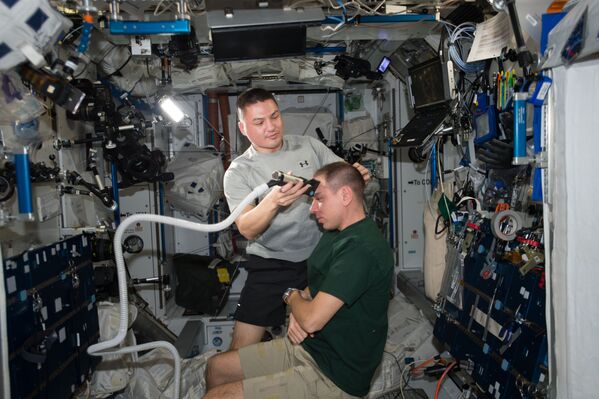
The ISS is operated from the two mission control centers, one in Korolev, outside Moscow, and the other in Houston, Texas. Each center has a permanent team of specialists from the other country.
Above: NASA astronaut Kjell Lindgren of Expedition 45 (L) provides a haircut to Russian cosmonaut Sergey Volkov (R) aboard the International Space Station.
Above: NASA astronaut Kjell Lindgren of Expedition 45 (L) provides a haircut to Russian cosmonaut Sergey Volkov (R) aboard the International Space Station.
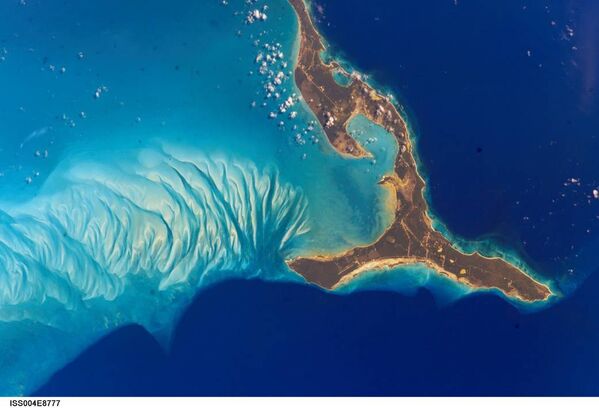
The ownership and use of the space station is established by intergovernmental treaties and agreements.
Above: The south end of Eleuthera Island in the Bahamas shimmers in turquoise waters in this 2002 photo from the International Space Station.
Above: The south end of Eleuthera Island in the Bahamas shimmers in turquoise waters in this 2002 photo from the International Space Station.
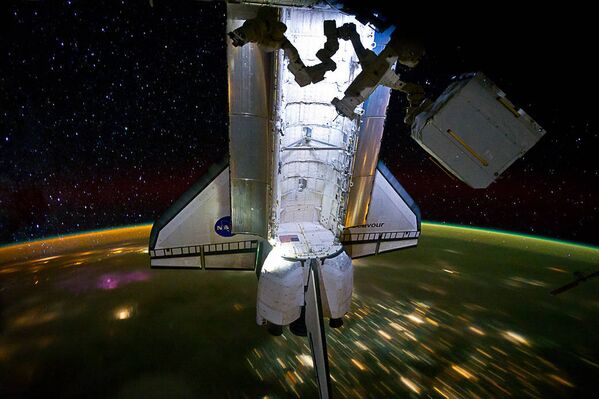
The station is divided into two sections, the Russian Orbital Segment (ROS) and the United States Orbital Segment (USOS), which is shared by many nations.
Above: Backdropped by a night time view of the Earth and the starry sky, the Space Shuttle Endeavour is photographed docked at the International Space Station.
Above: Backdropped by a night time view of the Earth and the starry sky, the Space Shuttle Endeavour is photographed docked at the International Space Station.
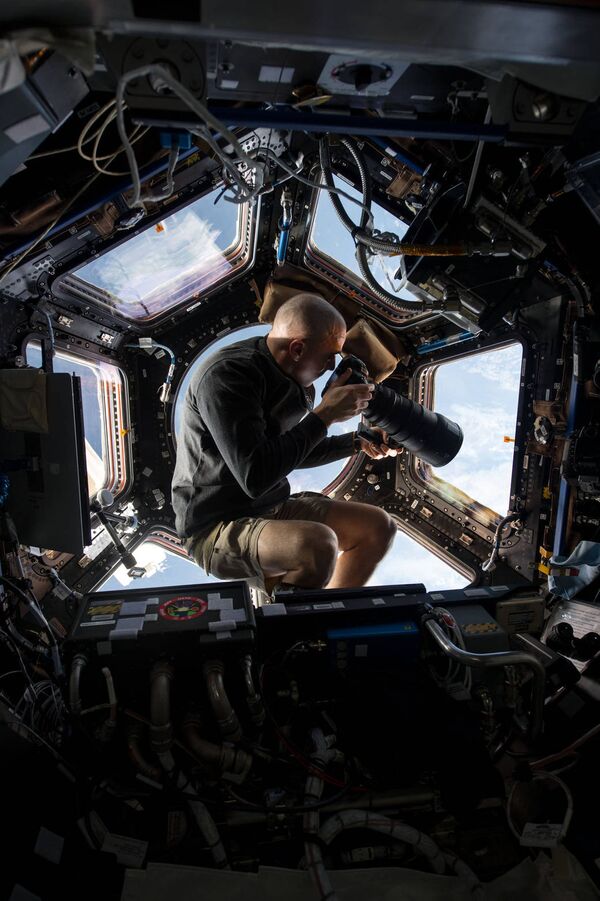
The ISS has a moduler design. It is assembled by adding a new modules or blocs to the station. The station has 14 main modules, including five Russian.
Above: Inside the Cupola, NASA astronaut Chris Cassidy, an Expedition 36 flight engineer, uses a 400mm lens on a digital still camera to photograph a target of opportunity on Earth some 250 miles below him and the International Space Station.
Above: Inside the Cupola, NASA astronaut Chris Cassidy, an Expedition 36 flight engineer, uses a 400mm lens on a digital still camera to photograph a target of opportunity on Earth some 250 miles below him and the International Space Station.
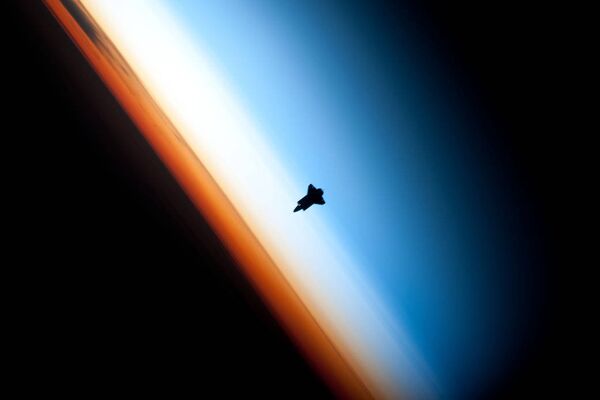
In March 2015, Russian sources announced that Roscosmos (the Russian Federal Space Agency) and NASA had agreed to cooperate on the development of a replacement to the ISS.
Above: In a very unique setting over Earth's colorful horizon, the silhouette of the space shuttle Endeavour is featured in this photo by an Expedition 22 crew member on board the International Space Station.
Above: In a very unique setting over Earth's colorful horizon, the silhouette of the space shuttle Endeavour is featured in this photo by an Expedition 22 crew member on board the International Space Station.



